Leshy: Master Of Forest And Wildlife In Slavic Beliefs
A. Sutherland - AncientPages.com - A forest is an exceptional place where the passage of time ceases to have meaning. It simply does not exist. Each forest has its guard. In Slavic mythology, it is a creature goat-footed woodland sprite known as Leshy.
Home of the Leshy. Fairy Forest at Sunset by Ivan Bilibin, 1906. Image credit: Ivan Bilibin - Public Domain
According to the early Slavic people, especially those who lived in heavily forested areas, Leshy looked like a person, but his appearance was described differently. He was often a masculine and mortal humanoid creature that could punish for killing an animal from his herd without permission.
He was the most powerful ruler of the forest and wildlife. He ruled over success, hunting, and happiness, cared for pets, and helped the poor.
All plants, fruits, and animals in the forest belonged to him, and Leshy drew its power from the surrounding trees; a strong forest had a guard with much more power than the weaker one.
Many Slavic tales mention forest wanderers, who encountered Leshy, and the course of this meeting often depended on how much a person had on his conscience.
He was depicted in human form or dressed in animal skins, and a deer and a wolf represented his symbolic animal. However, as some say, this absolute master of the forest is an earthly materialization of Bog Veles himself.
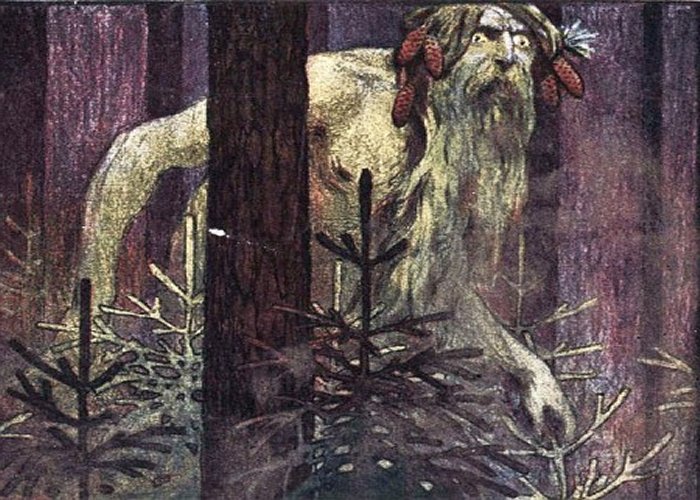 WITH cover of Magazine’s «Leshy» № 1-1906. Image credit: Leshy - Public Domain
WITH cover of Magazine’s «Leshy» № 1-1906. Image credit: Leshy - Public Domain
Some believed that Leshy was an earthly materialization of Veles, a god of cattle and wildlife. Meanwhile, others considered Leshy a servant of Veles.
He was often hostile towards people and could scare them his laughing or sending wild animals or confuse a man in the forest so much that he could not find a way back. Besides getting angry, Leshy could send predators upon domestic cattle and even kidnap a child.
If a person could find a way to communicate with Leshy in the forest, Leshy would show that person the "hidden paths" of the forest, leading that person through the woods in the shortest amount of time. Our ancestors trusted Leshy and would even leave small children under his care during harvest.
A child was often left near the field and by the entrance to the forest. Leshy was asked to watch over the child; parents could work in the field to collect the harvest. Leshy would not only protect the child from wild animals but could also send animals and other spirits of the forest to protect that child from people with ill intent and dark spirits." 1
Leshy could easily change its size and height, but he was seldom seen, though many heard his powerful laughing, whistling, or singing.
When he was occasionally spotted, he was quickly recognized because he appeared to be a very tall man with an unnaturally white face, whose hair resembled pine needles. In contrast, his skin had a bark-like appearance. His right ear, eyebrows, and eyelashes were missing; his head was somewhat pointed.
For our forefathers, the forest was almost a sacred sphere. Perhaps for many of us, this special place is still holy even today because its history is much longer than human history.
Updated on August 4, 2022
Written by – A. Sutherland - AncientPages.com Senior Staff Writer
Copyright © AncientPages.com All rights reserved. This material may not be published, broadcast, rewritten or redistributed in whole or part without the express written permission of AncientPages.com
Expand for referencesReferences:
- Kushnir, D. Creatures of Slavic Myth
More From Ancient Pages
-
 Did An Ancient Supernova Force Humans To Walk Upright?
Human Beginnings | Oct 24, 2019
Did An Ancient Supernova Force Humans To Walk Upright?
Human Beginnings | Oct 24, 2019 -
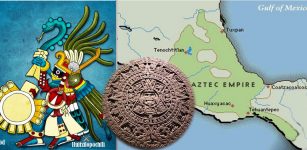 Why The Aztecs Called Themselves ‘Mexica’
Ancient History Facts | Jan 13, 2018
Why The Aztecs Called Themselves ‘Mexica’
Ancient History Facts | Jan 13, 2018 -
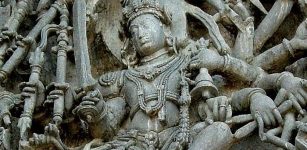 Chennakeshava Temple In Belur Is Richly Decorated With Scenes From Ramayana Mahabharata And Puranas
Featured Stories | Nov 18, 2021
Chennakeshava Temple In Belur Is Richly Decorated With Scenes From Ramayana Mahabharata And Puranas
Featured Stories | Nov 18, 2021 -
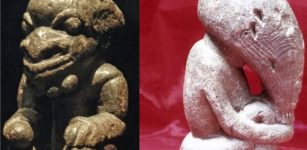 Monstrous Nomoli Figures Left By Unknown Culture That Vanished Long Ago
Artifacts | Mar 13, 2023
Monstrous Nomoli Figures Left By Unknown Culture That Vanished Long Ago
Artifacts | Mar 13, 2023 -
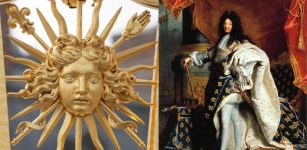 Why Was Louis XIV Called The Sun King?
Ancient History Facts | Jul 11, 2019
Why Was Louis XIV Called The Sun King?
Ancient History Facts | Jul 11, 2019 -
 Paleoindian Ochre Mine Found In Submerged Caves In Mexico’s Yucatan Peninsula
Archaeology | Jul 6, 2020
Paleoindian Ochre Mine Found In Submerged Caves In Mexico’s Yucatan Peninsula
Archaeology | Jul 6, 2020 -
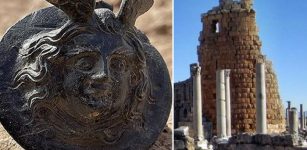 1,800-Year-Old Military Medal with Medusa Head Unearthed In Ancient City of Perge (Perrhe), Southeastern Turkey
Archaeology | Oct 11, 2022
1,800-Year-Old Military Medal with Medusa Head Unearthed In Ancient City of Perge (Perrhe), Southeastern Turkey
Archaeology | Oct 11, 2022 -
 Demise Of Cambodian City Angkor Caused By Decline In Occupation And Not Abrupt Collapse
Archaeology | Apr 18, 2019
Demise Of Cambodian City Angkor Caused By Decline In Occupation And Not Abrupt Collapse
Archaeology | Apr 18, 2019 -
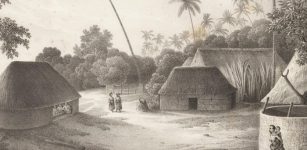 Impact Of European Contact With Pacific Islands Was Devastating – New Study Reveals
Archaeology | Sep 30, 2022
Impact Of European Contact With Pacific Islands Was Devastating – New Study Reveals
Archaeology | Sep 30, 2022 -
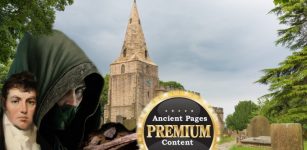 Unusual Ancient Human Bones Found In A Grave In Derbyshire – Burial Place Of A Legendary Person?
Featured Stories | Apr 24, 2024
Unusual Ancient Human Bones Found In A Grave In Derbyshire – Burial Place Of A Legendary Person?
Featured Stories | Apr 24, 2024 -
 Stone Water Well Dated To Sassanid Era (224-651 CE) Unearthed In Isfahan Hills, Iran
Archaeology | Jun 26, 2020
Stone Water Well Dated To Sassanid Era (224-651 CE) Unearthed In Isfahan Hills, Iran
Archaeology | Jun 26, 2020 -
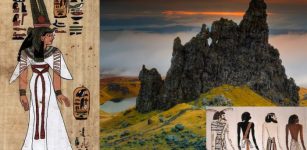 Ancestors Of The Irish And Scots Came From Biblical Lands And Ancient Egypt – Myths, History And DNA
Civilizations | Jul 14, 2020
Ancestors Of The Irish And Scots Came From Biblical Lands And Ancient Egypt – Myths, History And DNA
Civilizations | Jul 14, 2020 -
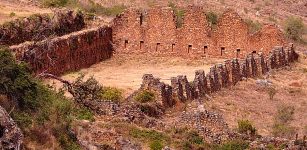 Inca Llajta: Largest And Most Impressive Inca Complex In Bolivia
Civilizations | Dec 6, 2018
Inca Llajta: Largest And Most Impressive Inca Complex In Bolivia
Civilizations | Dec 6, 2018 -
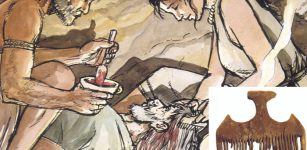 Evidence Of Hallucinogenic Drug Use During Bronze Age Ceremonies Found
Archaeology | Apr 6, 2023
Evidence Of Hallucinogenic Drug Use During Bronze Age Ceremonies Found
Archaeology | Apr 6, 2023 -
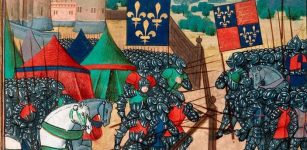 On This Day In History: Battle of Castillon Ended ‘Hundred Years’ War – On July 17, 1453
News | Jul 17, 2016
On This Day In History: Battle of Castillon Ended ‘Hundred Years’ War – On July 17, 1453
News | Jul 17, 2016 -
 Should Scientists Open An 830-Million-Year-Old Rock Salt Crystal With Ancient Microorganisms That May Still Be Alive?
Archaeology | May 27, 2022
Should Scientists Open An 830-Million-Year-Old Rock Salt Crystal With Ancient Microorganisms That May Still Be Alive?
Archaeology | May 27, 2022 -
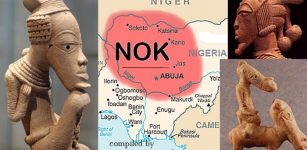 Enigmatic Nok Culture: A Sub-Saharan Archaeological Puzzle
Civilizations | Mar 7, 2020
Enigmatic Nok Culture: A Sub-Saharan Archaeological Puzzle
Civilizations | Mar 7, 2020 -
 400-Year-Old Shipwreck Found Off The Coast Of Portugal Labeled ‘Discovery Of A Decade’
Archaeology | Sep 26, 2018
400-Year-Old Shipwreck Found Off The Coast Of Portugal Labeled ‘Discovery Of A Decade’
Archaeology | Sep 26, 2018 -
 Interesting Relief Sculpture Of Pharaoh Hatshepsut Found At Swansea University
Archaeology | Mar 27, 2018
Interesting Relief Sculpture Of Pharaoh Hatshepsut Found At Swansea University
Archaeology | Mar 27, 2018 -
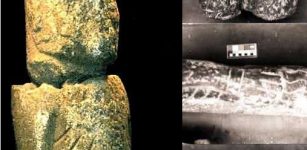 Inscription On Pokotia Monolith Reveals Sumerians Visited Peru Thousands Of Years Ago
Ancient Symbols | Sep 1, 2015
Inscription On Pokotia Monolith Reveals Sumerians Visited Peru Thousands Of Years Ago
Ancient Symbols | Sep 1, 2015

